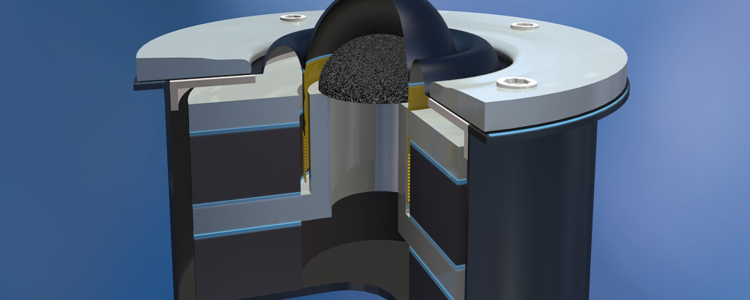The demand for loudspeakers is growing. Whereas the average car used to have four loudspeakers and two tweeters, modern cars can have as many as 20 speakers. To make loudspeakers, at least seven bonds are required per speaker, and the adhesive has to be flexible to enhance sound through vibration damping. In addition, the bonds must resist impact, exclude humidity, and tolerate temperature variations. Although cyanoacrylates are still widely used, the bond between the spider and voice coil can be achieved more efficiently when a UV or light curing adhesive is chosen. Not only is it possible to achieve bonding in 10 seconds or less, but these adhesives will tolerate the high temperatures that come from energizing the voice coil. Efficiencies are also realized when light curing adhesives are used to bond the “spider” to the “basket” and the membrane to the voice coil. Many manufacturers could benefit if they integrate light-curing adhesives into production lines to reduce the volume of work in progress by speeding curing time. It is possible to obtain the 20 newtons per centimeter peel resistance that is needed, and a fluorescent additive could speed and improve quality control. For bonding the magnets to the speaker, methyl methacrylates are generally used and give good performance, but they must be stored at low temperatures and at high humidity. Anaerobic adhesives that can be pre-cured using light would improve efficiency, and would not require any significant design changes. Loudspeaker production is an established process, but it can be made more efficient by using light curing adhesives which, with the addition of fluorescing agents, would also make quality control easier. The demand for loudspeakers is growing. Whereas the average car used to have four loudspeakers and two tweeters, modern cars can have as many as 20 speakers. To make loudspeakers, at least seven bonds are required per speaker, and the adhesive has to be flexible to enhance sound through vibration damping. In addition, the bonds must resist impact, exclude humidity, and tolerate temperature variations. Although cyanoacrylates are still widely used, the bond between the spider and voice coil can be achieved more efficiently when a UV or light curing adhesive is chosen. Not only is it possible to achieve bonding in 10 seconds or less, but these adhesives will tolerate the high temperatures that come from energizing the voice coil. Efficiencies are also realized when light curing adhesives are used to bond the “spider” to the “basket” and the membrane to the voice coil. Many manufacturers could benefit if they integrate light-curing adhesives into production lines to reduce the volume of work in progress by speeding curing time. It is possible to obtain the 20 newtons per centimeter peel resistance that is needed, and a fluorescent additive could speed and improve quality control. For bonding the magnets to the speaker, methyl methacrylates are generally used and give good performance, but they must be stored at low temperatures and at high humidity. Anaerobic adhesives that can be pre-cured using light would improve efficiency, and would not require any significant design changes. Loudspeaker production is an established process, but it can be made more efficient by using light curing adhesives which, with the addition of fluorescing agents, would also make quality control easier.
